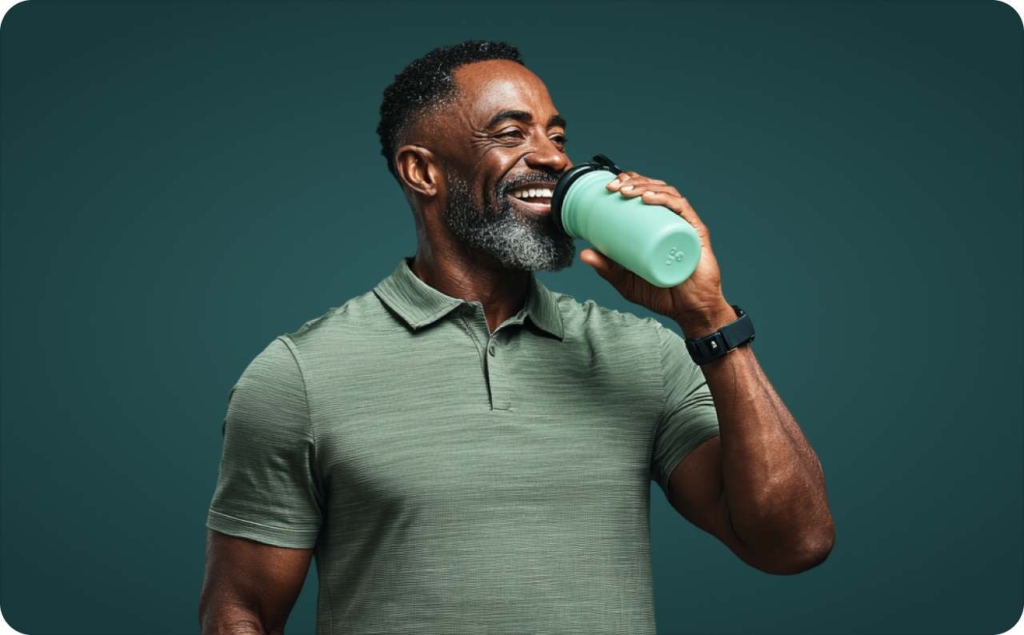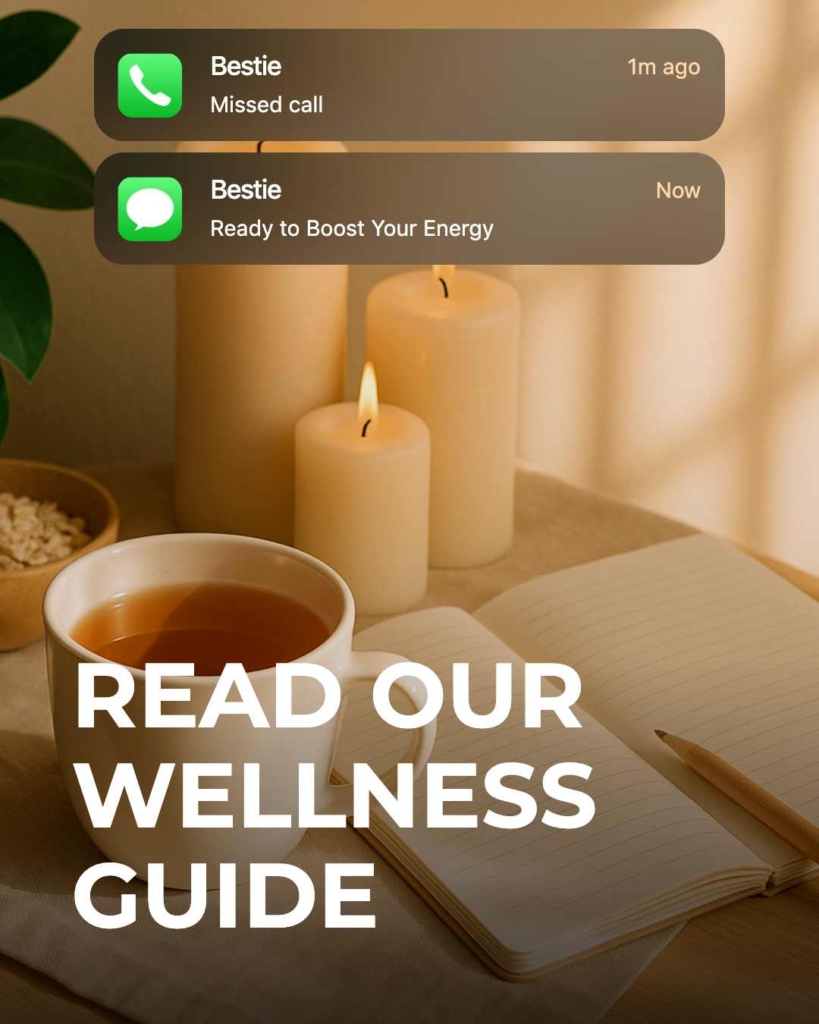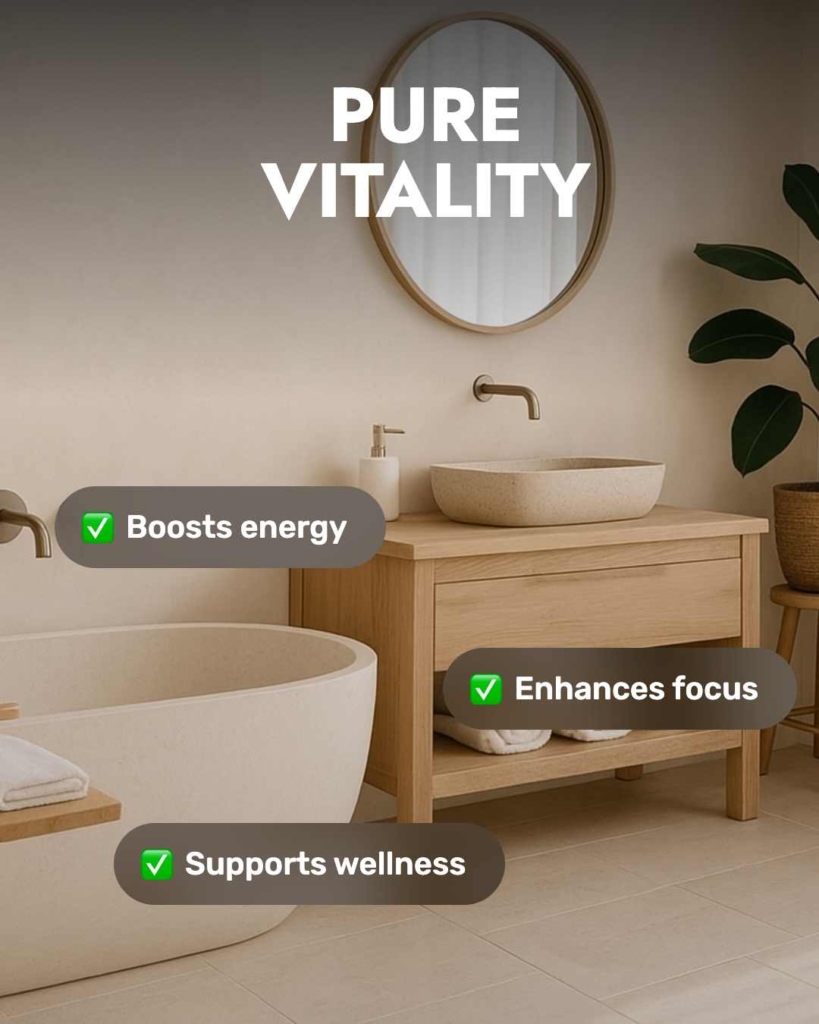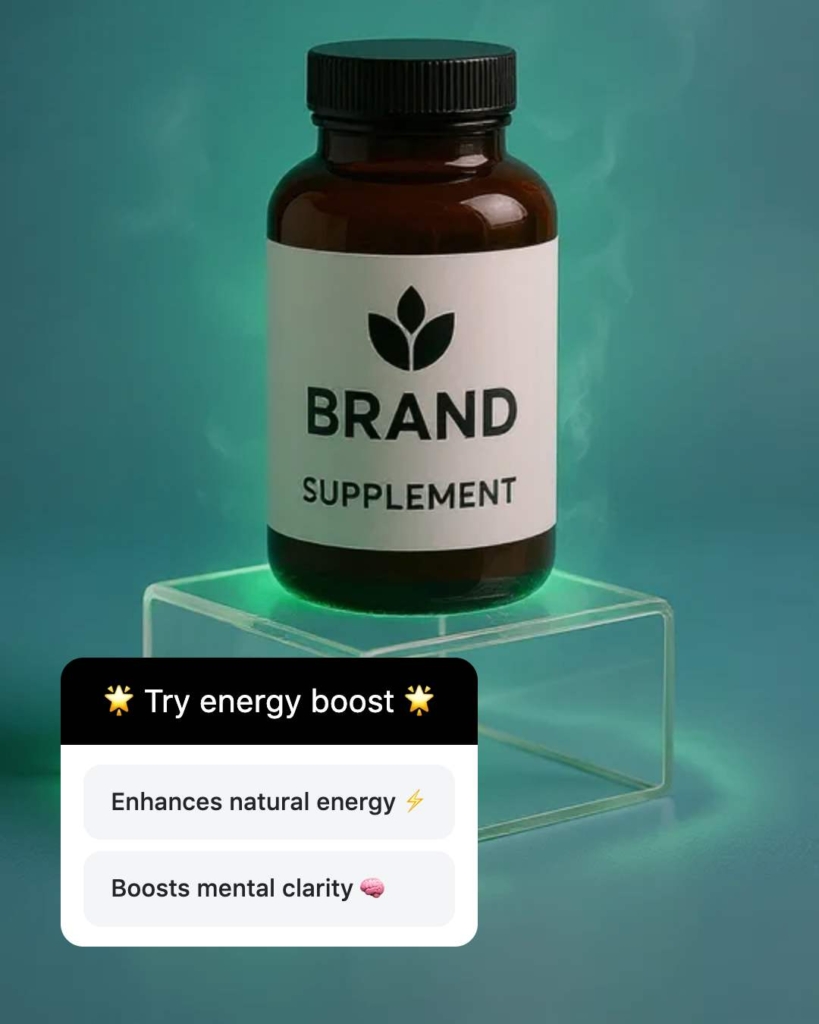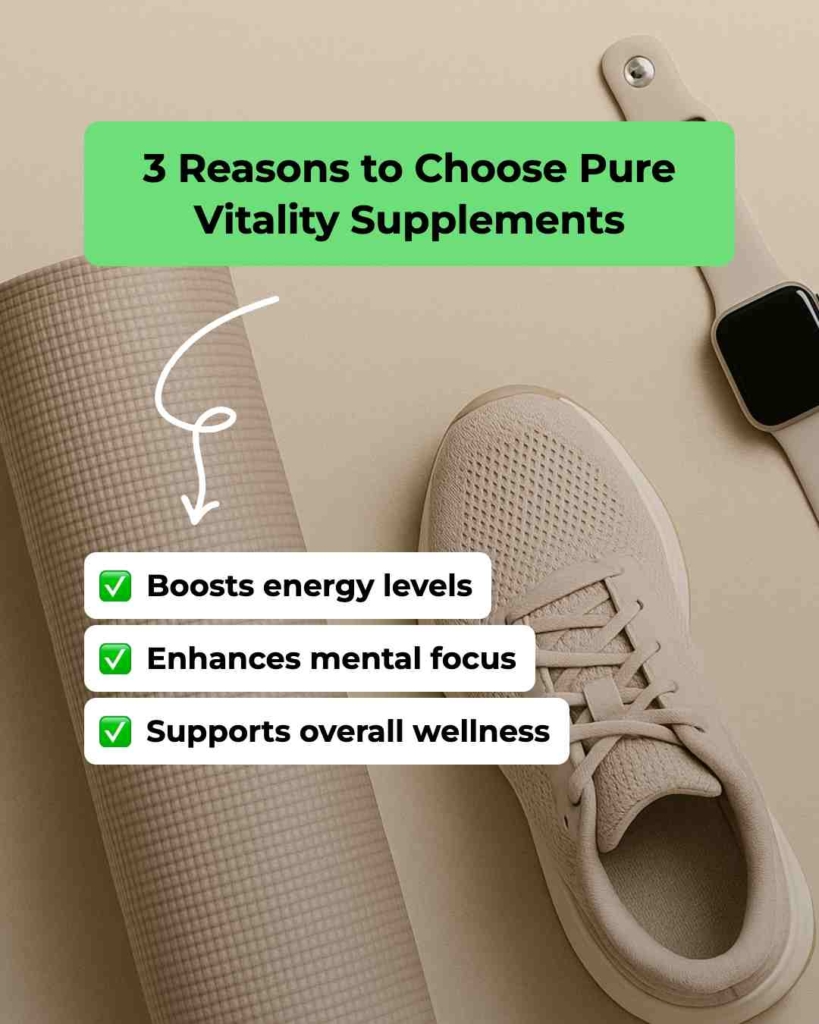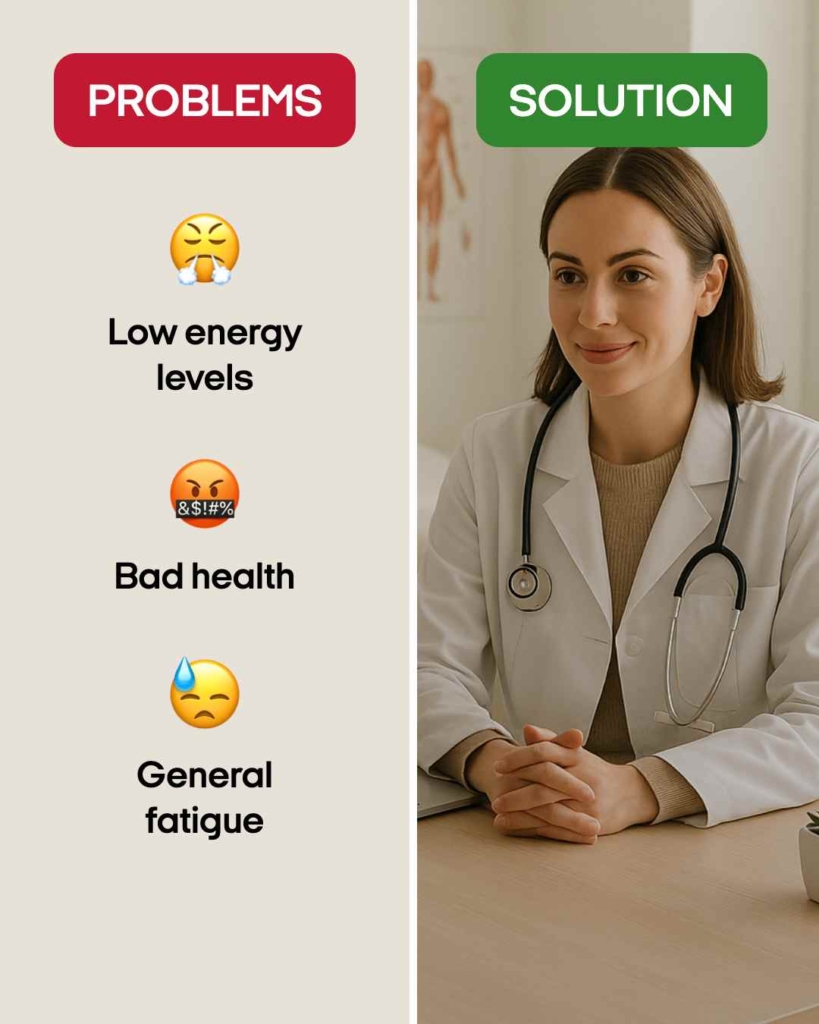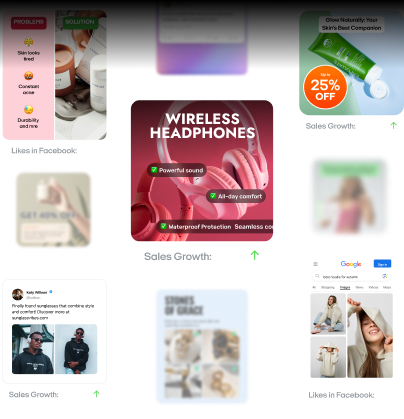Health and wellness advertising: creative trends, case studies and strategies
Ready to elevate your brand in the booming wellness market? Explore Zeely AI’s expert insights into health and wellness advertising featuring creative trends, real case studies, and data-driven strategies that prove what truly works.
Wellness brands only grow when people trust their message. But trust isn’t earned through claims. It’s built through creative that aligns with real values and delivers real results.
As the global wellness economy accelerates, brands have a rare opportunity to shape habits, influence decisions. You may build meaningful connections that extend far beyond a product pitch.
The challenge? Many campaigns still feel vague, overly polished, or disconnected from what people actually want: clarity, proof, and relevance to their health goals.
This guide shows how to make better health and wellness ads using data, audience insights, and creative that builds trust, so your message stands out and performs.

Understanding the health and wellness landscape
Market trends and growth projections
The global wellness economy hit $5.6 trillion in 2023 and is projected to reach $8.5 trillion by 2027. This rapid growth reflects a shift in how consumers value physical, mental, emotional health, fitness, and preventive care. You’re not just marketing products anymore. You’re entering a market that’s actively expanding.
More growth means more advertising spend. A recent McKinsey report found that wellness brands now put about 28% of their marketing budgets into digital ads. Three years ago, that number was just 17%. Most of that money now goes to paid social, search ads, and retargeting on platforms like Meta and Google Ads.
Why does this matter to you? Because you need proof to justify ad spend and performance platforms help you do that. With CTR, ROAS, and real-time analytics, you can show results and build smarter campaigns.
Key trends shaping wellness advertising in 2024 – 2025
Wellness brands are adjusting strategies in response to shifting digital dynamics, rising media costs, and consumer demand for transparency. The most impactful trends include:
Short-form video now dominates wellness ad performance. Brands selling vitamins, relaxation products, or sleep aids are moving away from static carousels and into Reels, TikToks, and YouTube Shorts. These formats generate 28% higher click-through rates and lower CPMs compared to images, especially when showcasing rituals, before/after results, or emotional testimonials. Consumers want to see trust, not just read about it.
AI-powered media buying is no longer optional — it’s operational. Tools like Meta Advantage+ and Google Performance Max are now standard for DTC wellness brands with lean teams and limited budgets. These systems automate bidding, creative rotation, and targeting. For example, one small nutraceutical brand saw a 12% drop in CAC within 30 days of activating Advantage+ campaigns.
Omnichannel rebalancing is helping reduce overdependence on Meta. While most wellness brands start with Instagram or influencer whitelisting, many shift budget toward YouTube Shorts, Google Display, and programmatic video as CPMs rise. Sleep-tech, mindfulness, and wearable fitness companies report stronger top-of-funnel results when diversifying beyond social.
Marketing Efficiency Ratio is replacing ROAS for better clarity. Because wellness journeys are cross-channel: mixing UGC, email flows, organic search, and retargeting, platform-level ROAS often gives a fragmented view. Brands using Shopify + Klaviyo + Meta now track MER to evaluate how total revenue aligns with blended ad spend, especially for repeat-purchase verticals like supplements and wellness subscriptions.
Creative testing is a non-negotiable in high-competition categories. The difference between a $5 CPA and a $25 one often comes down to a single headline, benefit framing, or testimonial type. Leading advertisers test weekly variations: smiling model vs expert quote, bold promise vs educational hook, 3-benefit lists vs emotional stories. In wellness, creative without A/B testing is a gamble.
Looking ahead, wellness ad spend is expected to grow at 9.2% CAGR through 2027, outpacing most industries. That’s faster than most industries. And categories like women’s health, biohacking, and supplement stacks are getting more attention from both new and established companies.
If you’re unsure where to invest your budget, start with what’s working:
- Ads that solve real problems
- Creatives that build trust
- Channels that let you track performance
In a market this competitive, following trends isn’t enough. You need data to back your message, tools to measure results, and a strategy that connects everything from first click to final purchase.
Consumer behavior and expectations
A 2024 study found that 61% of wellness shoppers buy only from brands that match their personal values like sustainability, transparency, and mental health support. So if your ad makes big claims but lacks substance, it can do more harm than good.
Authentic marketing focuses on transparency, relatability, and trust. It uses real testimonials, actual customers, and lived experiences to show how a product fits into someone’s daily life. Instead of polished brand claims, this approach highlights genuine use cases and personal stories. For example, Ritual ran testimonial-style Instagram ads featuring everyday women discussing their gut health routines. These ads delivered 27% more engagement than product-only posts.
You also need to match your message to lifestyle. A stressed remote worker won’t respond the same way as a post-run athlete. That’s why audience segmentation matters. Tailor your ads to match personal goals, like sleep, energy, or focus.
Behavioral data helps refine your message. Metrics like watch time, click-through rate, and comments reveal what content resonates. Brands that test variations often discover simple changes like wording or visuals can shift engagement significantly.
If your ad isn’t converting, ask:
- Does it speak to one clear benefit or try to say everything?
- Are you showing real people or relying on perfect product shots?
- Does it reflect what your audience actually values?
In wellness marketing, clarity builds connection. Consumers notice when a brand listens and they reward those that speak to their needs.
Inspiring creative examples in health and wellness advertising
You asked for concrete creative inspiration. This showcase dissects real Meta campaigns on Facebook and Instagram so you can see how visual storytelling, tight copy, smart design elements, and clear CTAs come together.
Case studies from leading brands
CeraVe: Education meets trust
CeraVe ran an Instagram carousel with the headline “Dermatologist developed, TikTok approved.” Each slide focused on a key skincare ingredient like Niacinamide. The visuals were clean, the copy was short and helpful, and every card ended with a CTA: “Find your formula.” This mix of expert-backed content and mobile-friendly design helped boost saves by over 2x compared to static posts.
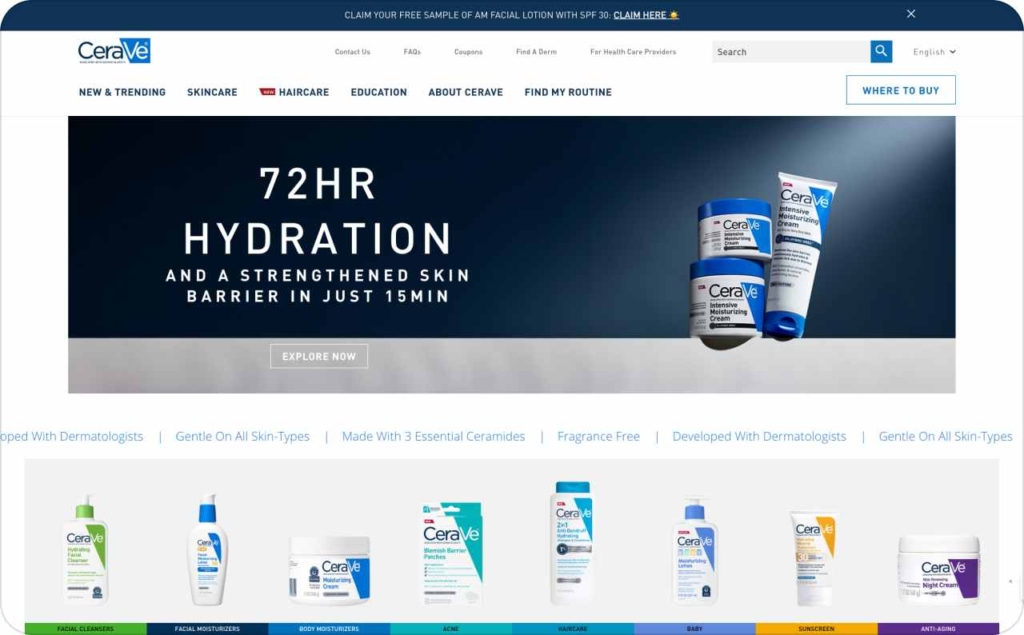
Photo source: CeraVe
Bala: Lifestyle over product features
Rather than showcasing product specs, Bala focused on people using their gear in everyday moments: dancing, stretching, moving freely. The video included no text or voiceover, just high-energy visuals and upbeat music. It felt like content, not a commercial. This authentic, movement-first approach led to a 38% higher engagement rate, proving that mood matters more than marketing jargon.
Olly: Simplicity that converts
Olly’s 10-second Facebook video featured animated supplement bottles labeled by benefit: “Sleep”, “Focus”, “Energy”. There was no ingredient breakdown, just clear product intent. The CTA, “Start with your goal,” appeared within seconds. That fast, benefit-driven framing increased click-through rates by 27%, showing that less copy and early relevance boost performance.
Kin Euphorics: Emotional storytelling
Kin used Instagram stories to create a feeling, not a pitch. The line “Mood without the buzz” appeared over slow, cinematic visuals with soft colors and calming music. A gentle voiceover explained how the drink helps you feel present and less anxious. This soothing, mood-focused approach cut skip rates by 1.8x, keeping users engaged with the message.
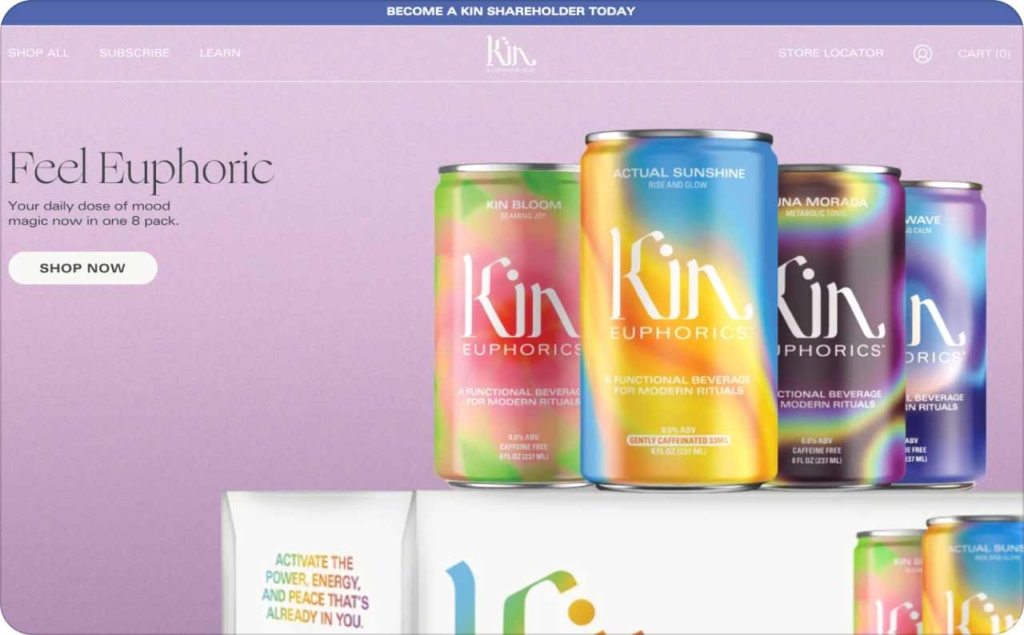
Photo source: Kin Euphorics
Ritual: Radical transparency
Ritual’s Facebook image ad showed a close-up of their multivitamin capsule with every ingredient listed and sourcing details in the caption. There was no fluff just facts about purity and testing. This honest, transparency-first design drove 30% more saves and increased reading time, especially from first-time viewers looking to validate the product’s credibility.
Key trends in health and wellness advertising
Experiential and immersive marketing
In 2025, wellness brands aren’t just telling people what they offer, they’re letting them experience it. That’s the power of experiential marketing. Instead of static ads, top brands are building immersive campaigns that feel like real-life wellness moments.
Take Peloton. It builds community through live rides, immersive challenges, and real-time leaderboards. Users become part of the story. These interactive campaigns keep people engaged longer and drive deeper brand loyalty.
Other brands use augmented reality to simulate product benefits. Picture an app that lets you “try on” better posture or stress relief through guided breathwork. That’s virtual engagement done right.
In-person, pop-up studios, mindfulness booths, or meditation buses let people touch, feel, and test your wellness offering in a sensory way. These brand activations make your message stick, literal and emotional.
According to Statista, brands using immersive formats see 2x higher engagement than static digital ads.
Bottom line: If your ad feels flat, consider turning it into an interactive experience. Make people feel the benefit, not just hear about it.
Emphasizing unique health benefits and personalization
Generic health ads don’t work anymore. Today’s wellness shoppers want relevance, clarity, and proof. That’s why the strongest campaigns highlight one clear benefit and match it to personal needs.
Athletic Greens, for example, runs ads that change based on who’s watching: a busy mom sees a message about immune support, while a runner sees energy and recovery. This kind of segmented messaging led to 35% higher click-through rates and lower acquisition costs.
If you’re still running one-size-fits-all wellness ads, you’re missing out. Today’s tools let you tailor your creative to match sleep patterns, stress levels, or dietary goals, and platforms like Meta make delivery seamless.
Takeaway: Show users what’s in it for them and how your solution fits into their unique health goals.
Leveraging social impact and influencer partnerships
In wellness, trust drives conversions. And nothing builds trust faster than authentic voices and shared values. That’s why modern health campaigns lean on influencer marketing and social impact storytelling.
Olly partnered with mental health advocates to connect its sleep supplements to better rest and emotional balance. They weren’t just selling, they were supporting a bigger cause. That emotional alignment led to a 28% increase in brand trust, especially among Gen Z.
The key isn’t just using influencers. It’s finding those whose values match your brand, and letting them speak in their own voice. Layer that with social impact, whether it’s sustainability, mental health, or giving back, and you build a message people care about.
Advice: Partner with people who share your purpose. Make your campaigns more than promotional, make them meaningful.
Build an effective health and wellness advertising campaign
Define your USP and understanding your audience
To stand out in wellness, you need to say more than “we’re clean and effective.” You need a USP that clearly communicates your value, aligns with your brand mission, and speaks directly to customer needs.
Use this simple formula to write your USP:
“We help [audience] solve [problem] so they can [outcome].”
Example:
We help tired parents improve sleep naturally with science-backed magnesium gummies, no groggy mornings.
Now test your message. Is it outcome-focused? Specific to your product category? Aligned with your wellness brand values? If not, refine it using real feedback from surveys, support chats, or reviews.
Once your USP is clear, map it to your target audience. Start with audience segmentation using filters like age, lifestyle, goals, and digital behavior. Use tools like GWI, Google Analytics, or Meta Audience Insights.
Need help prioritizing which group to target first? Ask:
- Who has the most urgent need?
- Who already searches for this solution?
- Who brings the highest potential lifetime value?
You can even use a simple spreadsheet with columns for audience relevance, reachability, and conversion potential to rank segments. That’s how you turn guesswork into strategic positioning.
Develop your online advertising strategies – social, search and retargeting
The most successful campaigns use platform-specific strategies to guide people through discovery, consideration, and conversion.
Here’s a quick guide to align your digital tactics with your goals:
| Platform | Best use сase | Effective formats |
| Mid-funnel education + lifestyle demos | Video, carousel, testimonials | |
| Visual storytelling + brand discovery | Reels, Stories, UGC | |
| Google Search | High-intent, problem-solving queries | Text ads, product landing pages |
| Retargeting Ads | Nurturing and closing interested users | Offers, dynamic product ads |
Let’s say you’re running a wellness brand focused on immunity:
- Start with Instagram Reels showing customer routines using your product.
- Retarget views with a Facebook carousel that explains the benefits and shares user testimonials.
- Then launch a Google Search campaign targeting terms like “best natural immune support” to catch high-intent buyers.
That’s a full-funnel experience powered by integrated marketing.
Example:
Athletic Greens increased conversions by 18% after testing Google Search headlines focused on outcomes “More energy in 7 days” vs features “75 vitamins in one scoop”.
Always tie your platform use back to digital performance. If you’re not optimizing by segment and format, you’re leaving reach and ROI on the table.
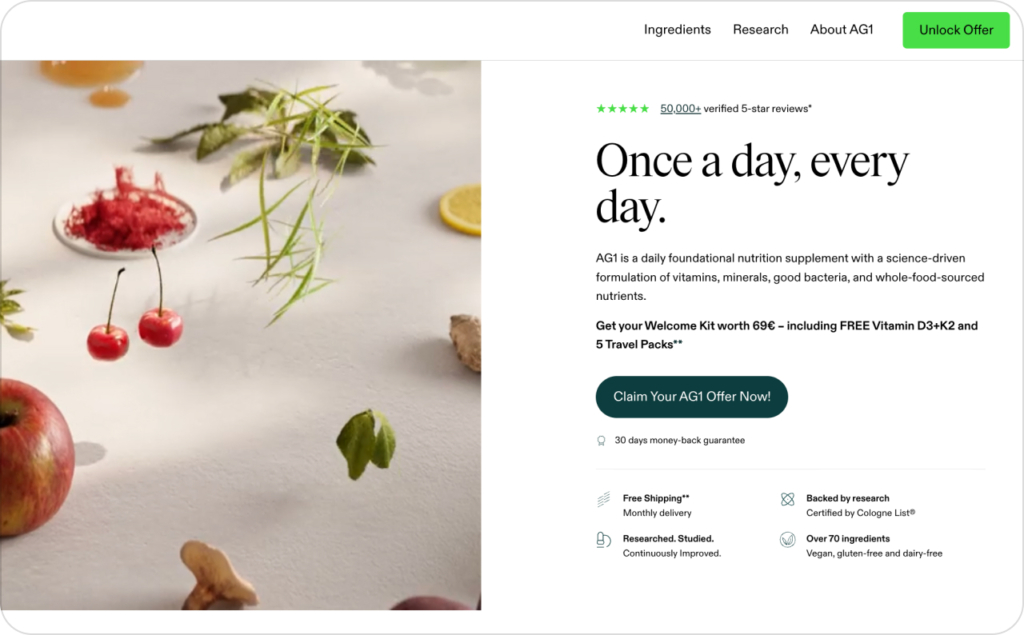
Photo source: Athletic Greens
Integrate offline events and community engagement
Start small. A 30-minute yoga session in a park. A smoothie-tasting booth at a farmer’s market. A guided breathwork event with a local expert. These simple experiences make your brand feel real. When you connect face-to-face, you turn casual followers into loyal fans.
Offline events boost your digital strategy. Take photos, film short clips, and share them on Instagram Reels or TikTok. Add QR codes at your event that link to a landing page or product bundle. Even one small event can fuel weeks of content, generate leads, and power your retargeting ads.
Example in action: A supplement brand teams up with a wellness coach to host a “Morning reset.” Guests try free samples, scan a QR code for a wellness tracker, and later see themselves featured in a recap video on social. Now the brand has fresh UGC, stronger engagement, and a story worth sharing.
Link offline and online for bigger impact. When your events lead back to your digital campaigns, you create a full experience. Wellness brands that blend digital and physical touchpoints build trust, loyalty, and lasting attention.
Create wellness ads that inspire — with AI
In health and wellness, trust and clarity are everything. Whether you’re promoting holistic services, coaching programs, or wellness products, Zeely AI helps you create high-quality ads in minutes — no creative team required.
From healthcare and healthy food to skincare brands and healing retreats, Zeely empowers you to build ads that feel authentic, look polished, and connect with your audience across platforms.
You may also like
Why it works for health & wellness marketers
- Ad creation, simplified. Generate beautifully designed static and video ads in under 7 minutes — no editing software or design skills needed
- Boost trust and conversions. Zeely’s AI-optimized creatives are crafted to build credibility and drive engagement, consultations, or product sales
- Save on production costs. Skip the agency fees. Use lifelike AI avatars and plug-and-play templates to keep your marketing in-house and on budget
- Reach your community everywhere. Launch customized ads for Instagram, Facebook, YouTube, TikTok, and Google — built for today’s wellness audiences
- Test and refine effortlessly. Run up to 20 ad variations per offer — great for experimenting with tone, visuals, and seasonal campaigns
Features made for health & wellness brands
- 100+ templates for wellness offerings. Built for coaches, spas, therapists, skincare, supplements, mental health, yoga, and more — with ongoing updates
- AI copywriting with empathy. Instantly craft compelling titles, captions, and CTAs using trusted messaging frameworks like AIDA and 4U — tuned for wellness
- 500+ humanlike AI avatars. Add warmth and relatability to your video ads with diverse virtual presenters — ideal for storytelling and service intros
- Visual editor for natural branding. Customize color palettes, crop images, and clear backgrounds — all designed to match your wellness aesthetic
- Meta integration included. Launch directly to Facebook and Instagram without leaving the Zeely dashboard
- Story-driven script builder. Generate narrative-rich scripts to showcase your services, explain your mission, or promote wellness journeys with clarity and heart
Affordable pricing for mindful growth
Zeely offers flexible pricing to fit any stage of your wellness journey — from solo practitioners to growing wellness brands. Every plan includes templates, avatars, video tools, and publishing features. Starting at $29.95/month, with advanced tiers unlocking even more creative tools.
Why wellness brands choose Zeely AI
Wellness marketing requires authenticity, empathy, and clarity and Zeely delivers all three. Built for service-first businesses, it combines automation with thoughtful design, helping you create trustworthy, effective ads in just minutes. Whether you’re offering retreats, products, or 1-on-1 services, Zeely helps you grow your practice without stress, delays, or external dependencies.
Conclusion and next steps
You’ve explored what makes health and wellness advertising succeed. Now it’s time to apply it. Campaigns that win today are built on actionable insights, honest creative, and audience-first messaging.
Start simple. Pick one goal. Speak to one audience. Solve one real problem. Build creative that reflects real voices and real values, not polished promises. Then test it. Track click-through rates, conversion, and ROAS. Adjust and improve using what your audience shows you.
Ask yourself: does your message highlight one clear benefit? Does it connect across digital and offline experiences? If not, revise your strategy based on what your audience really needs.
This is your chance to put everything from this guide into motion from Meta creative to experiential pop-ups to segmentation tools. Start implementing the best practices that build trust and growth.
You may also like
Also recommended

